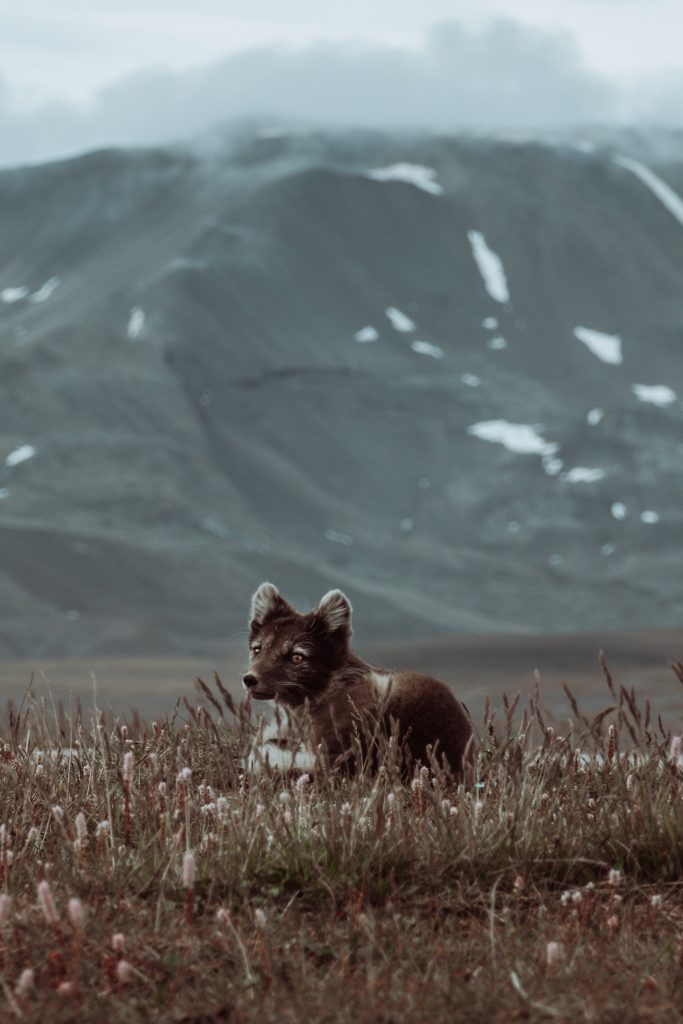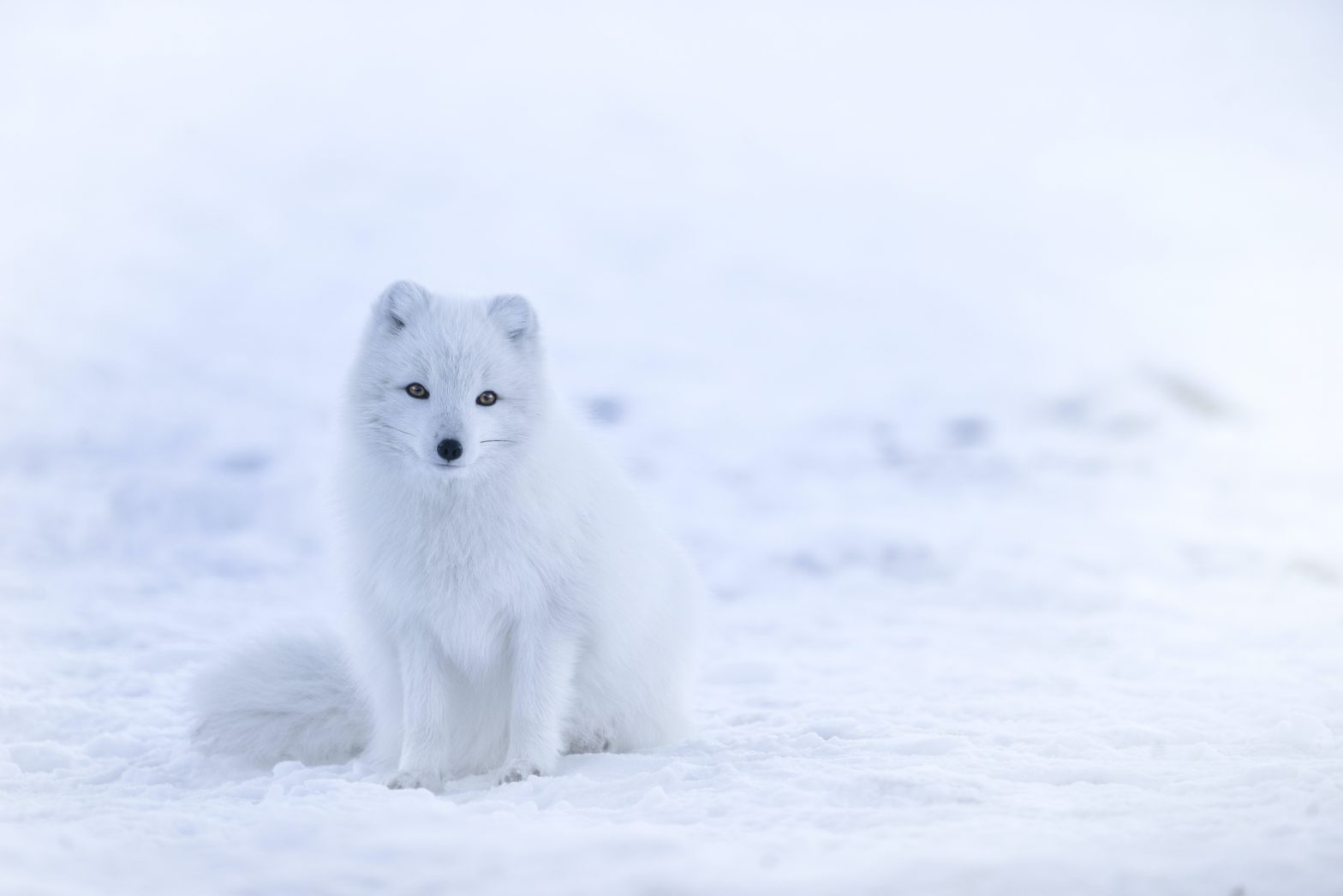Authors: Emma Holborn, Miisa Pikkarainen, Annastina Saari, Lorie Zhang (from the course ECGS-036, Arctic and Human Beings)
The Arctic fox (Vulpes lagopus), perhaps one of the most beautiful and cutest mammals found in the Arctic area, is also a highly endangered species in Fennoscandia. During the end of 19th and beginning of 20th century, it was cruelly hunted near to extinction due to its precious skin. In fact, its skin was so valuable that it corresponded up to one year’s salary for a labourer. Currently, there are only 6-12 Arctic foxes in Finland, making it the most endangered mammal in the country. In Norway and Sweden, the population is slightly better with approximately 450 Arctic foxes in total, giving hope to Finland. Fortunately, in other Arctic areas, such as Canada and Alaska, the Arctic fox is currently doing well with 110 000 individuals.
Although the hunting of the Arctic fox is nowadays prohibited, it faces new challenges in the Arctic areas of Fennoscandia. Current threats include the red fox that is moving northward due to climate change, Arctic warming and changes in the mole and lemming cycles, which the Arctic fox uses for nutrition. So, with the Arctic fox slowly making its return to Fennoscandia, how can humans help preserve it from extinction?

Captive breeding
In order to re-establish, strengthen and increase genetic exchanges of Scandinavian Arctic fox populations, the Polar Fox Surveillance and Breeding Programme started in 2003. The breeding programme consisted of capturing wild cubs in Norway, breeding them in captivity and releasing them in nature. The foxes were bred at the station of Oppdal and released in Dovrefjell, a Norwegian national park where the polar fox had disappeared. From 2007 to 2012, the programme released 76 cubs in Dovrefjell. To increase their chances of survival, food stations had been established for the foxes. The first free born cubs were born in 2010.
Nevertheless, the programme received a lot of criticism. It was denounced as speciesism: “The practice and ideology of systematically discriminating against other species”. Several foxes were caught through abusive and painful methods, causing stress among animals which died in captivity. Data suggests that 50-75 % of the released animals died after only a few years in nature. These individuals were semi domesticated and depended on humans to feed them.
The Norwegian Arctic fox captive breeding programme was successfully established in 2005 with the same goals as the programme mentioned above. Food dispensers and artificial dens were prepared in the release sites. Pups had a first-year survival rate of 44 %. The main causes of death were anthropogenic (road kills and illegal hunting) and natural predation (golden eagle and wolverine). Most released individuals succeeded to establish in areas where the species had become extinct. In 2015, 50 % of Norwegian breeding pairs included released Arctic foxes or their descendants.
Red fox culling
The expansion of red foxes has increased towards Arctic and subarctic mountain regions during the recent decades. Climate warming, prey availability and human activity have favoured the red fox migration to a higher altitude. The increased occurrence of red foxes and overlapping distribution between the foxes threatens the recovery of the Arctic fox populations as red foxes are observed to exclude Arctic foxes from resources, like breeding dens and carrion.
Hence, Arctic fox conservation measures include red fox hunting. In Finland, 150-500 red foxes have been culled yearly from the Arctic fox territory. The red fox hunting combined with feeding of Arctic foxes have had a positive effect for the Arctic fox population development. In the areas located in Sweden and Norway where dens have been occupied by red foxes, Arctic fox litters have increased significantly after the red fox abundance has decreased by culling. Arctic foxes avoid red foxes especially during the summer season, when reproduction takes place. One study shows that during the winter season, Arctic foxes lived in the same elevations as red foxes, but during the summer Arctic foxes moved to higher altitudes. When the number of red foxes decreased by culling, Arctic foxes seemed to stay at lower altitudes in both seasons. It is suggested that red fox presence has a strong negative effect on the reproduction of Arctic foxes, probably mostly due to fear effect and resource exclusion.

Supplemental feeding of the Arctic fox
Supplementary feeding has been implemented across Scandinavia to increase survival rates for malnourished Arctic foxes. They rely on rodents such as lemmings and voles as their main food source. However, they are also opportunistic feeders, foraging on what is available, such as small birds, berries, and eggs and even abandoned seal carcasses when lemming populations are dwindling.
A Norwegian study from 2013 to 2017 followed Arctic foxes’ responses to 31 feeding dispensers. They found that dispensers were used opportunistically when prey was scarce, for example when rodent abundance decreased. Feeders were busiest in the breeding season with older and breeding individuals visiting dispensers the most. Although this study showed successful supplementary feeding, there may be future management problems as some dens may not be accessible for humans to monitor.
The high availability of supplemental food has also been suggested to introduce trigger hoarding behaviour for later use in their dens. This may in turn attract more predators such as the golden eagle, increasing individual’s predation risks. Overall, feeding is a viable solution as food security becomes more uncertain with climate change. It may have positive implications on Arctic food webs by allowing prey species such as lemming populations to recover.
Conclusions
Although several successful measures have been taken to help the Arctic fox to return to Finland, Norway and Sweden, its future still seems very uncertain. With the Arctic area warming almost four times faster than the rest of the globe during the time period of 1979-2021, the living conditions of the Arctic fox are becoming more and more unstable. While none of the above-mentioned methods guarantee the survival of the Arctic fox, their combination may provide better chances of survival and growth in the Fennoscandian Arctic fox population, even with rising temperatures.

